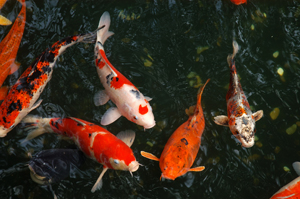
Feng shui is often explained as the art of placement or living in harmony with the environment, and that is accurate. However, those words alone are not comprehensive enough to explain this dynamic, exciting science.
by Denise A. Liotta-Dennis —
Feng shui, introduced to America about 28 years ago, continues to be well-loved; there are more than 1,000 books on the subject, worldwide. However, even many of those who are well-read on the subject are unaware that there are different types of feng shui. There is the authentic, classical and traditional type practiced in Asia for thousands of years, and the recent newcomer, a watered-down, Westernized version of this science.
Western feng shui was introduced by a Tibetan Buddhist monk of the Black Hat order (Professor Lin Yun). All Buddhist monks/nuns have some knowledge of martial arts, feng shui and Chinese medicine, as these studies all involve the understanding and use of chi or energy. He introduced some basic feng shui tools (the Ba Gua) and then created other things not recognized in Asia as feng shui.
When the well-known feng shui masters of Taiwan, Hong Kong and Malaysia heard what was being taught as feng shui in the U.S., Europe and Australia, they were appalled. So about 10 years ago, they started offering training courses to the masses. They wanted the public to know that 99 percent of what was presented in the books was not authentic feng shui and was not, by any means, how the Asians have practiced it for thousands of years.
Western feng shui does have some resemblance to classical feng shui; otherwise it might be a complete hoax. Western feng shui makes use of the Ba Gua, five elements, and the principles of yin and yang but, in its simplistic interpretation, it resembles more interior decoration than adjusting energy.
For instance, the eight life aspirations or stations (e.g., “helpful people sector,” “marriage sector,” “career sector” etc.) are not found in the feng shui classics. Other Western schools of feng shui also adopted the eight life stations. This simple way of looking at energy in the eight directions cannot be used to design a home, much less a huge hotel.
Western feng shui will also overlay the Ba Gua on your floor plan and orient all structures to the North. No compass is used to actually determine if your home faces this direction or not. This is one of the major differences in the two types of feng shui; classical feng shui will always involve the use of a compass or the Chinese Luo Pan. The Luo Pan is used to measure the directional chi of doors, roads, mountains, highways, sidewalks, water features, interior doors, stoves and a myriad of other things affecting the energy of your space.
Successful business moguls, Steve Wynn and Donald Trump, do not use the Westernized version that is widely understood and accepted as feng shui. These savvy businessmen employ the services of Hong Kong feng shui masters. In Malaysia, Hong Kong, Taiwan and Singapore, feng shui methods are very sophisticated and complex.
Take the Bellagio Hotel in Las Vegas as an example. The building is sited and oriented to a specific degree to benefit the owner. This means the main door or entrance was chosen before the plans were drawn. Calculations were made by the master, taking into consideration the surrounding forms. Important things to consider prior to choosing the facing direction would be the road, the mountains, other hotels in view of the Bellagio’s main door, water feature locations and how the roads converged in front of the hotel.
All of this energy is measured using a Chinese Luo Pan. Many other considerations and purposeful designs went into the creation of this hotel, using classical feng shui. The result is an extraordinarily popular place to hang out.
Common “cures” used in Western feng shui are mirrors, crystals and paint, but these were not everyday objects in the ancient world. While the ancients did not have such a complex society involving TVs, computers, highways and high rise buildings, these are easy to place. Highways are like fast moving rivers, high-rise structures are mountains and electronic devices are a fire element.
Classical feng shui does not really utilize cures. Recommendations to adjust the energy of your space are as unique as the individual, the structure and the surrounding landscape or environment. Classical feng shui has literally hundreds of formulae with which to audit and design a building. Therefore, it can be used for city-planning, urban development, new home design, spa/hotels, shopping centers, master-planned communities, manufacturing plants, office buildings, banks and much more.
Feng shui is often explained as the art of placement or living in harmony with the environment, and that is accurate. However, those words alone are not comprehensive enough to explain this dynamic, exciting science.
Denise A. Liotta-Dennis has studied with four noted feng shui masters from China, Malaysia and Australia, including Grand Master Yap Cheng Hai, and belongs to his 400-year old Wu Chang Feng Shui Mastery lineage. 480-241-5211, ww.dragongatefengshui.net or dgfs@cox.net.
Reprinted from AzNetNews, Volume 25, Number 1, February/March 2006.





April 19, 2013
Environment, Feng shui, Spiritual, Philosophical and Metaphysical